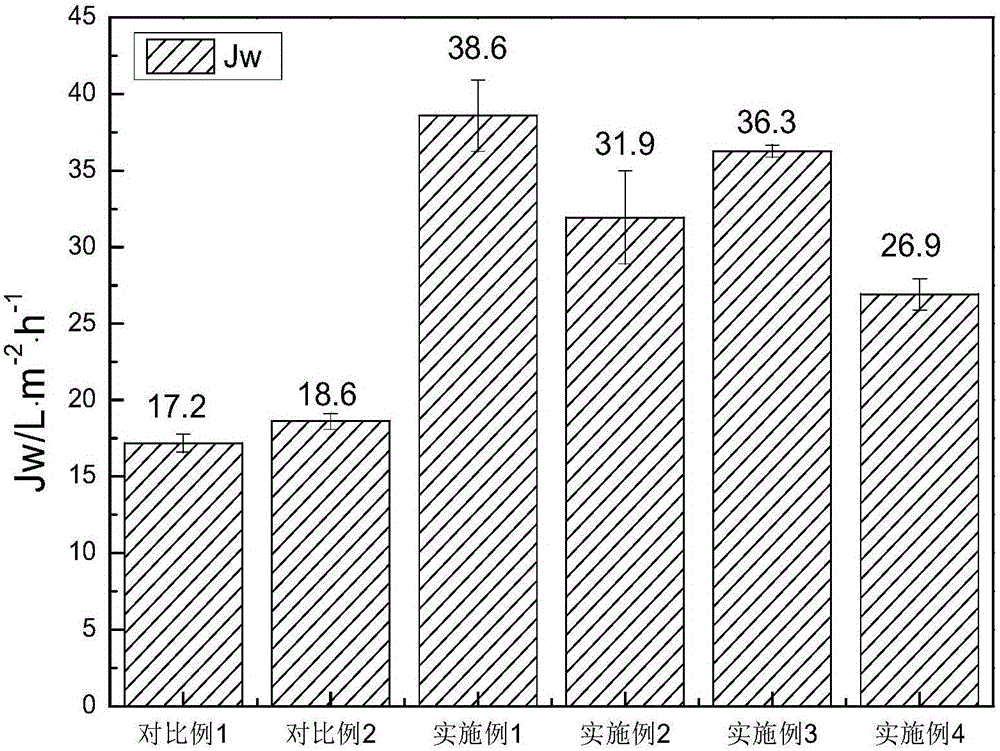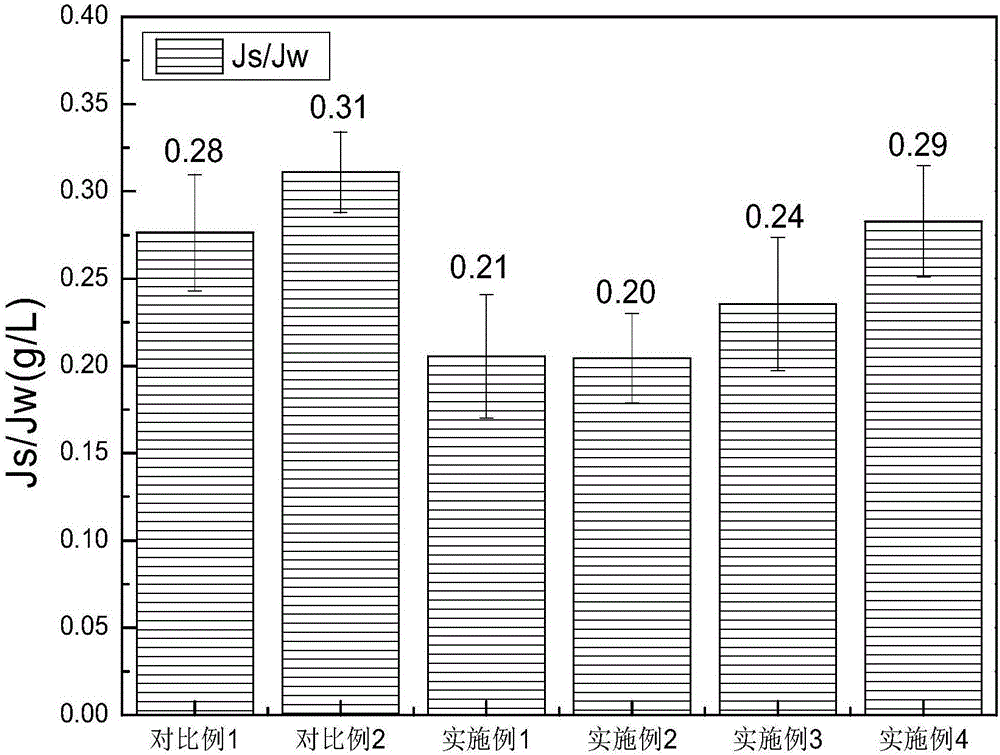Method for preparing high-throughput composite forward osmosis membrane
A forward osmosis membrane, high-flux technology, applied in the direction of semi-permeable membrane separation, chemical instruments and methods, membrane technology, etc., can solve the problem of unfavorable water and solvent rapid exchange, the inability to form an open bottom surface structure, and low forward osmosis flux to achieve the effects of reducing internal concentration polarization, increasing water flux, and reducing structural parameters
- Summary
- Abstract
- Description
- Claims
- Application Information
AI Technical Summary
Problems solved by technology
Method used
Image
Examples
Embodiment 1
[0046] Example 1: A stainless steel microporous membrane is used as the substrate.
[0047]Preparation method: replace the glass plate with a stainless steel microporous membrane, and the rest of the steps are the same as in Comparative Example 1. The high-performance composite forward osmosis membrane prepared is fully washed with deionized water and stored in 0.1% sodium bisulfite solution.
[0048] Performance: With 1M NaCl and deionized water as the draw liquid and raw material liquid, the forward osmosis water flux is 38.6±2.3LMH, the reverse salt flux is 8.0±1.9gMH, and the brine ratio is 0.21g / L.
[0049] Structure: The membrane is composed of a porous support layer and a dense separation layer. The bottom surface structure is completely open. The spongy layer in the support layer is extremely thin, and the finger-shaped holes almost run through the entire section of the membrane. The overall thickness of the membrane is about 100 μm. The structural parameter is 172.5 μ...
Embodiment 2
[0050] Example 2: Using a porous sieve plate as the base.
[0051] Preparation method: Replace the glass plate with a porous sieve plate, and the rest of the steps are the same as in Comparative Example 1. The high-performance composite forward osmosis membrane prepared is fully washed with deionized water and stored in 0.1% sodium bisulfite solution.
[0052] Performance: With 1M NaCl and deionized water as the draw liquid and raw material liquid, the forward osmosis water flux is 31.9±3.0LMH, the reverse salt flux is 6.1±1.3gMH, and the brine ratio is 0.20g / L.
[0053] Structure: The membrane is composed of a porous support layer and a dense separation layer. The bottom surface has a high porosity ratio. The spongy layer in the support layer is extremely thin. The finger-shaped holes almost run through the entire section of the membrane. The overall thickness of the membrane is about 100 μm. The structural parameter is 235.8 μm.
Embodiment 3
[0054] Embodiment 3: using a ceramic microporous membrane as a substrate.
[0055] Preparation method: Replace the glass plate with a ceramic microporous membrane, and the rest of the steps are the same as in Comparative Example 1. The high-performance composite forward osmosis membrane prepared is fully washed with deionized water and stored in 0.1% sodium bisulfite solution.
[0056] Performance: With 1M NaCl and deionized water as the draw liquid and raw material liquid, the forward osmosis water flux is 36.3±0.4LMH, the reverse salt flux is 8.5±1.4gMH, and the brine ratio is 0.24g / L.
[0057] Structure: The membrane is composed of a porous support layer and a dense separation layer. The bottom surface is a completely open structure. The support layer is composed of a very thin spongy layer and a finger-shaped pore layer with a small tortuosity. The overall thickness of the membrane is about 100 μm. The structural parameter is 190.7 μm.
PUM
| Property | Measurement | Unit |
|---|---|---|
| Aperture | aaaaa | aaaaa |
| Aperture | aaaaa | aaaaa |
| Aperture | aaaaa | aaaaa |
Abstract
Description
Claims
Application Information
 Login to View More
Login to View More - R&D
- Intellectual Property
- Life Sciences
- Materials
- Tech Scout
- Unparalleled Data Quality
- Higher Quality Content
- 60% Fewer Hallucinations
Browse by: Latest US Patents, China's latest patents, Technical Efficacy Thesaurus, Application Domain, Technology Topic, Popular Technical Reports.
© 2025 PatSnap. All rights reserved.Legal|Privacy policy|Modern Slavery Act Transparency Statement|Sitemap|About US| Contact US: help@patsnap.com



